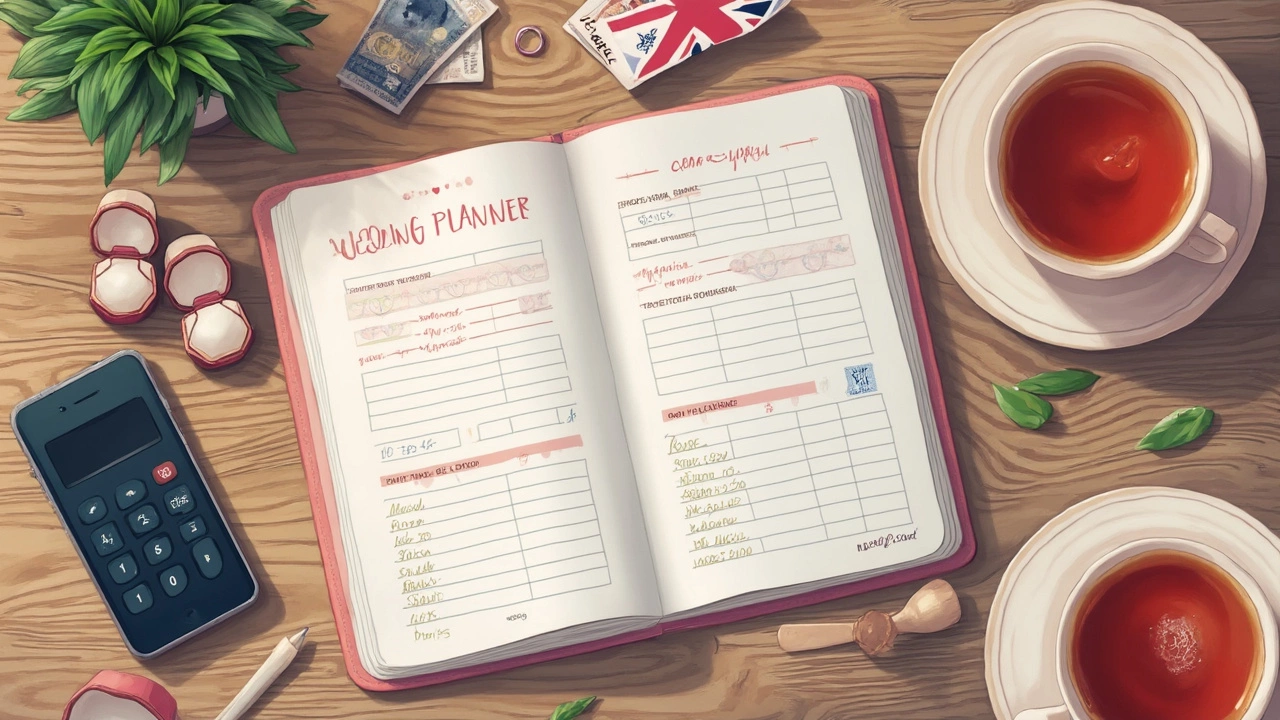Ever heard that you should spend two or even three months' salary on a ring? Yeah, so has everyone else. But let's be real: if you make $100k a year, throwing down $20k or $25k for a ring might make you break out in a sweat—or laugh out loud. That “three months” thing? It started as a marketing idea from diamond companies, not some ancient wisdom.
If you're making around $100k, you're already ahead of most people in the U.S., but that doesn't mean you need to go wild with your ring budget. People are actually spending less than these old rules suggest. According to a big wedding site survey last year, the average engagement ring cost in the U.S. was about $6,000—but plenty of couples go higher or lower, depending on what feels right for them.
The sweet spot? It's all about balancing what you can afford right now, what your partner loves, and what will still leave room in your budget for actual life—like trips, a new couch, or, I don't know, feeding your needy cat (Luna basically owns me). The key: spend what feels comfortable, not what some old ad tells you. You’ll thank yourself later.
- What People Actually Spend vs. Old Rules
- Factors That Should Guide Your Decision
- How to Get the Most Value for Your Money
- Mistakes to Avoid When Buying a Ring
What People Actually Spend vs. Old Rules
Let’s put the big rumor to rest: that “three months’ salary” thing for engagement ring shopping is just a leftover from a 1930s De Beers ad campaign. It has nothing to do with your finances or what’s normal today. If you make $100k a year, that famous rule would push you towards a $25,000 ring. Honestly, very few people do that.
What are couples really shelling out? According to The Knot’s 2024 Real Weddings Study, the average wedding ring spend in the U.S. was about $6,200 last year. In bigger cities like New York or San Francisco, people tend to spend more—sometimes $10k or higher—but in smaller towns and rural areas, the average slips under $4k. These numbers are way under that old marketing “rule.”
| Region | Average Ring Spend (2024) |
|---|---|
| U.S. National Average | $6,200 |
| Big Cities | $7,800 |
| Suburbs | $5,500 |
| Rural Areas | $3,900 |
Why is there such a gap between what’s “recommended” and what’s real? Life has changed. People value travel, owning a home, building up savings (or yes, treating their cat to organic snacks) over draining their cash for a rock. Plus, alternatives like lab-grown diamonds and vintage rings give couples much more bang for their buck compared to the past.
The bottom line is, nobody is watching to see if you hit some magic number with your ring budget. So if you feel sheepish about not following a decades-old suggestion, relax. What matters is how the ring makes you and your partner feel—and that your purchase fits your real-world budget.
Factors That Should Guide Your Decision
There’s no magic number that works for everyone, especially if you’re earning 100k salary. When it comes to setting a ring budget, here’s what actually matters:
- Your day-to-day expenses and savings goals. Can you buy the ring you want and still make rent, pay debts, smash your student loans, or build up your emergency fund? If the answer is no, the ring can wait—it’s better than moving back in with your parents.
- Your partner’s style and values. Not everyone wants a flashy diamond. Some people care more about the meaning behind the wedding ring than the size of the rock. If they’re into vintage or unique stones (think sapphires or moissanite), you might get way more for your money.
- How soon you want to spend on other big things. Planning a wedding? Saving for a house? Setting up a travel fund? A massive ring now could put a dent in all that. It’s totally okay to go smaller on the ring if it means saying yes to those bigger dreams faster.
- Comfort with debt. About 30% of ring buyers finance at least part of their purchase, according to a 2024 industry report. But interest adds up fast. Unless it’s truly zero percent and you know you’ll pay it off, think twice before you sign up for years of payments.
- Insurance and care. Don’t forget, a big or rare ring usually needs insurance. If you travel, work with your hands, or tend to lose things (I’m looking at you, cat owners), you’ll want to factor this monthly cost in.
Here’s a quick look at what couples with similar incomes actually spent, based on a 2024 survey of U.S. buyers:
| Household Income | Average Ring Spend |
|---|---|
| $80k–$100k | $6,200 |
| $100k–$120k | $7,400 |
| $120k–$150k | $8,500 |
Bottom line? Your ring should make you (and your bank account) happy, not stressed. The only rule that matters: buy what feels right for you—then wear it with confidence.

How to Get the Most Value for Your Money
If you want your ring budget to stretch, it’s not about luck—it’s about knowing where your cash actually goes. Diamonds lose value instantly after purchase, so think twice before feeling pressured to "invest." The good news: you can still score a beautiful ring on a $100k salary without overpaying, as long as you’re smart about the details.
- Prioritize what matters most. Maybe your partner loves vintage settings. Maybe size matters, or maybe a unique gemstone is the dream. Focus your money there, not on the "hottest" trends that’ll fade.
- Don’t fall for the "perfect" diamond hype. Stick to what’s called the "eye-clean" standard—if you can’t spot a flaw without a microscope, you’re set. Instead of a perfect D color, consider near-colorless (G or H) and VS2 clarity. You’ll save hundreds, maybe thousands.
- Go off the beaten path. Lab-grown diamonds have exploded lately. They’re real diamonds but cost way less. Some couples save up to 40% going this route, and nobody can tell the difference with the naked eye.
- Choose the right size and shape. Carat weight is a big price factor. But choosing a slightly lighter diamond (say, 0.90 instead of a full carrot) can look almost identical and cost way less. Fancy shapes like ovals or pears look bigger per carat than rounds.
When it comes to saving money, shopping around pays off. Online retailers often beat big-brand jewelry store prices—sometimes by thousands. Here’s a quick look at what people paid for rings last year, so you get a reality check:
| Where Bought | Average Cost (2024, USD) |
|---|---|
| Local Jewelry Store | $7,500 |
| Major Chain Retailer | $6,200 |
| Online Retailer | $4,800 |
It’s not just about the rock, either. Factor in the ring’s metal. 14k gold looks nearly the same as 18k but costs less and is actually more durable. Platinum’s pretty, but it dings and scratches easier.
Last tip: don’t forget about warranties and resize guarantees, especially if you buy online. Repairs add up fast. And honestly, set a wedding ring budget and stick to it. There’s no magic number, but these tricks get you the most bling for your buck.
Mistakes to Avoid When Buying a Ring
You’d be surprised how easy it is to mess up when buying a ring. I’ve seen friends overspend, get totally confused by the details, or regret their choices months later. A little planning can keep you from falling into the common traps.
- Spending more than you’re comfortable with: Don’t let old-school rules dictate your ring budget. Use your actual finances as your guide. Remember, wedding rings aren’t an investment—they’re a purchase you’ll hopefully love forever.
- Ignoring your partner’s style: It’s not about what’s “in” or what looks fancy on Instagram. A wedding ring should fit your partner’s personality and everyday life. Is your partner athletic? Do they work with their hands? Go for durability over drama.
- Paying for things you can’t even see: The difference between “good” and “very good” clarity on a diamond? You probably can’t spot it unless you have a jeweler’s magnifier. Save your cash for cut and carat—not tiny grading upgrades.
- Not checking the return or upgrade policy: Life happens. Sometimes you want to trade up later (or return if it’s not perfect). Make sure you know the store’s rules before you swipe your card.
- Forgetting about insurance: Accidents and theft are real risks. Some policies cover loss, theft, or even mysterious “disappearances.” It’s not sexy, but ring insurance can save you serious regret if things go sideways.
- Skipping the certificate: If you’re paying decent money for a diamond, always get a grading report from a legit agency like GIA or AGS. Trust me, that little paper matters. If a store tries to sell you a "house certificate," be skeptical.
Need a reality check? Check out this simple table showing what buyers really regret after purchase, according to a 2024 industry survey:
| Regret | Percentage of Respondents |
|---|---|
| Spent too much | 38% |
| Wrong style/size | 27% |
| No insurance | 18% |
| Didn't ask about returns | 10% |
| Poor value for price | 7% |
Stick to your actual budget, double-check policies, and focus on ring budget and your partner’s taste. You’ll avoid the most common regrets and start off marriage with one less thing to stress about.

